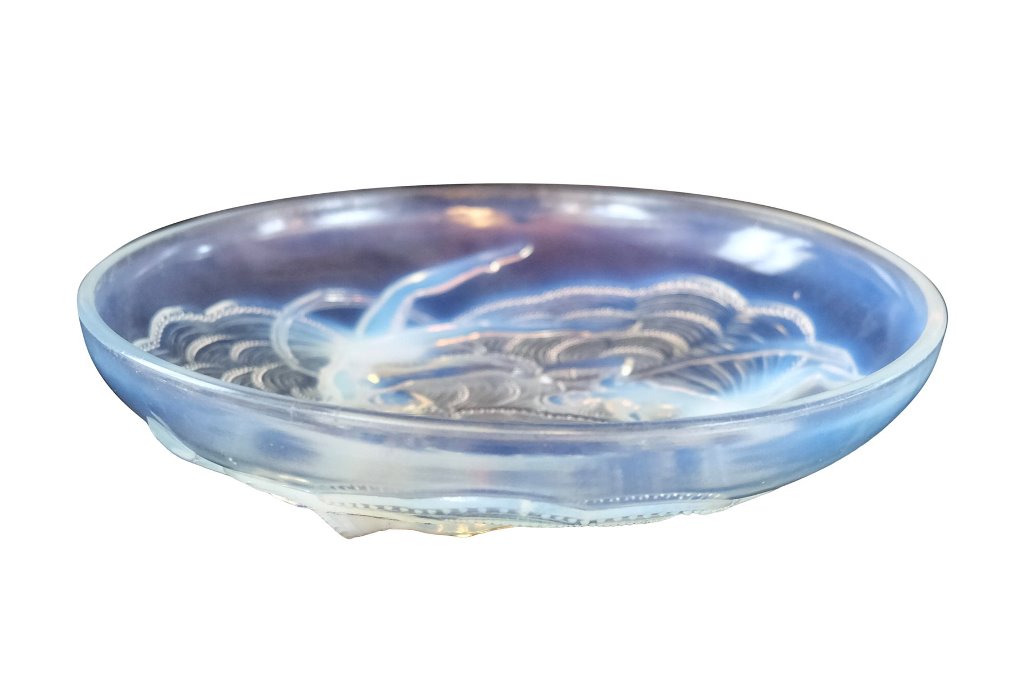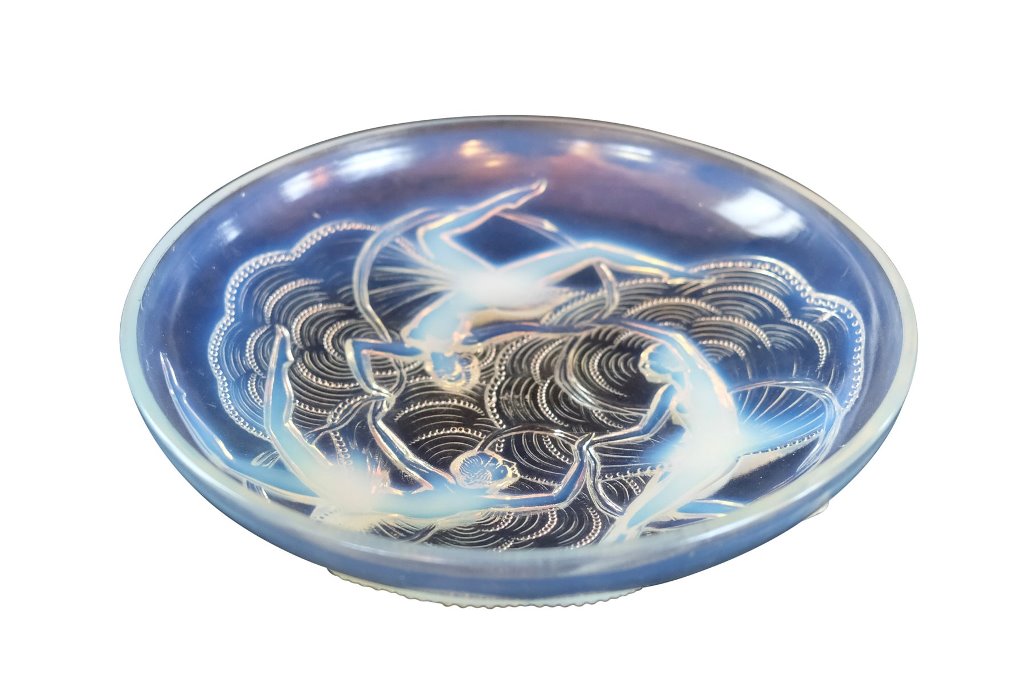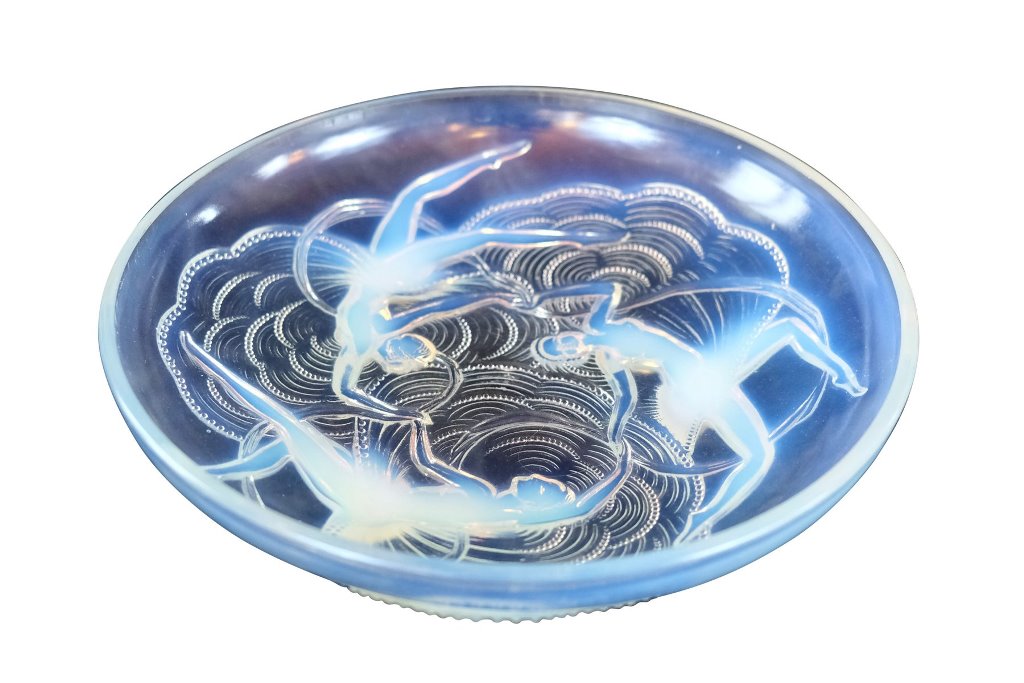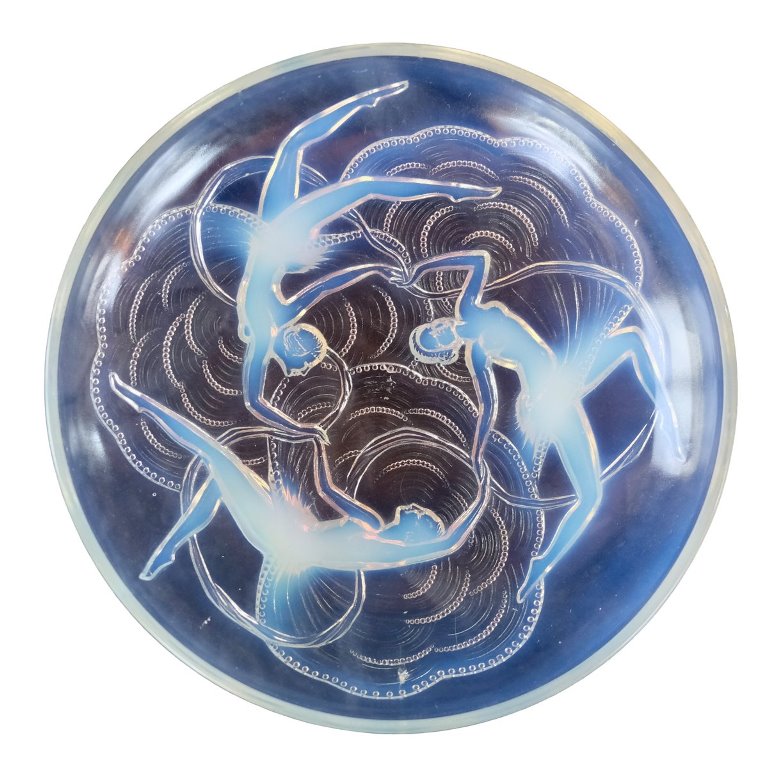Verly glass bowl with dancers
Nr. 2309 | 2.260,-- Euro
Original Art Deco bowl
Three-dimensional dancers with a scarf as a relief in opal glass.
Verly’s France.
Original Art Deco bowl
France 1930.
Diameter: 35 cm
Height: 8cm
Price: 2.260,– €
(including 19% VAT that is deductible)
Verly glass bowl with dancers
Verlys Glassmaking was a company that operated in France in the 1920s and 1930s. The company was known for its high-quality glassware and innovative techniques in glassmaking.
Verlys Glassmaking was founded by Gabriel Argy-Rousseau, a renowned French glass artist and designer. Argy-Rousseau had prior experience in glassmaking and had worked for another prestigious glass factory in France.
Argy-Rousseau had a passion for the art of glass and was dedicated to developing new techniques to enhance the beauty and quality of the material. Verlys Glassmaking was the result of his work, and the brand quickly became synonymous with quality and innovation in glassmaking.
Verlys glassware was handmade and was known for its unique designs and colors. The company also used special techniques such as etching and engraving to give its glassware unique textures and patterns.
Unfortunately, production of Verlys Glassmaking ended during World War II when the factory was seized by German occupiers. Although the company no longer exists, Verlys glassware is highly sought after today and is valued by collectors around the world.
Verly Glass is a well-known company famous for its Art Deco glassware. The company was founded in the 1920s and produced a variety of items, including vases, bowls, lamps, and sculptures.
A common depiction on Verly Glass Art Deco objects are dancers. These were often stylized and abstracted to emphasize the artistic and decorative features of the Art Deco style.
The dancers were typically depicted in dynamic poses that expressed movement and elegance. They often wore long dresses that had flowing lines and sweeping curves to emphasize the shapes of the human body.
Verly Glass dancers were often depicted in groups moving in a choreographed formation to convey the atmosphere and rhythm of dance. The use of glass as the material for these sculptures gave them a unique transparency and lightness that added additional liveliness to the movements of the dancers.
Opal glass is a type of milk glass made by adding fluoride compounds that reduce the transparency of the glass and make it opaque. In the Art Nouveau style, opal glass was often used for lampshades, vases, and other decorative objects.
The production of opal glass in the Art Nouveau style began in the late 1880s and lasted until World War I. During this time, the craft of glassmaking became an important part of the arts and crafts movement. The production of opal glass required high craftsmanship and knowledge of the chemical composition of glass.
The production of opal glass began with the melting of raw materials such as quartz sand, soda, and limestone in a furnace. Then, fluoride compounds such as calcium fluoride or sodium fluoride were added to make the glass opaque. The glass was then shaped and decorated, often using the technique of etching or engraving.
In the Art Nouveau style, floral patterns and organic forms were popular, and these were often integrated into the design of opal glass objects. A well-known example of opal glass in the Art Nouveau style is the Tiffany lamp, designed by Louis Comfort Tiffany and made from a variety of colored opal glass.
The production of opal glass in the Art Nouveau style was an important part of the artistic movement that shaped the 19th and early 20th centuries. Today, opal glass is still popular for decorative purposes and is often used in art and crafts.
Art Deco at RSA Wiesbaden
You can find more Art Deco cabinets, Art Deco chests of drawers and Art Deco lamps in my shop in Wiesbaden. Regine Schmitz-Avila – your specialist for French Art Deco furniture and art objects from around 1930.





